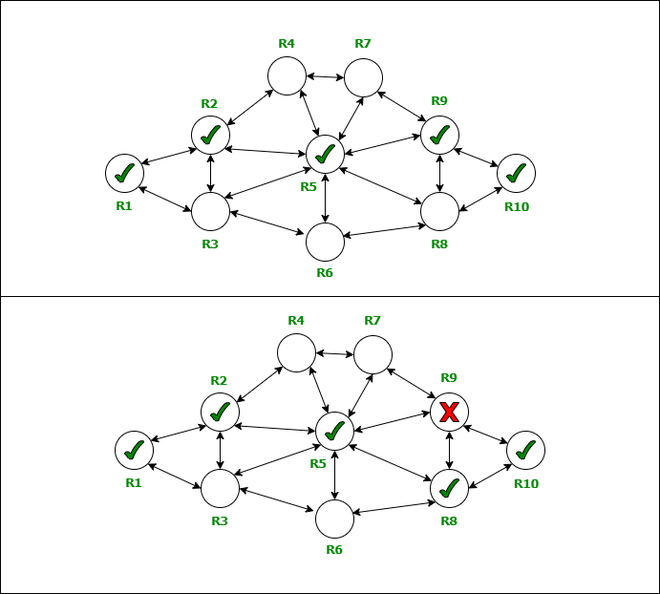What is Dynamic Routing in Computer Network?
Last Updated :
17 Dec, 2021
Routing is a procedure of making decisions in which the router (which is a hardware device used in networking to receive and send data in the form of packets on a network) selects the best path to make data transfer from source to destination. A router exists in the network layer in the OSI as well as TCP/IP model. Some functions of a router are:
- Building an optimal path on a network to reach its destination (in which static and dynamic routing take place).
- Taking routing decisions.
- Balancing load.
Types of Routing:
- Static routing
- Default routing
- Dynamic routing
Static and Default routing has some drawbacks, due to which Dynamic Routing was introduced.
Drawbacks of Static Routing:
- It is a burdensome task to sum up or add-on each route manually to the routing map in a large network.
- Managing its ordering is time-consuming.
- It cannot reroute traffic in case some link fails.
Drawbacks of Default routing was:
- If the network is complex then it is more difficult to set up.
To overcome the shortcomings of static and default routing, Back in the 1980s, the first-ever Dynamic routing was used in a computer and the protocol which was used in it was the RIP(routing information protocol).
Dynamic Routing
Dynamic routing is known as a technique of finding the best path for the data to travel over a network in this process a router can transmit data through various different routes and reach its destination on the basis of conditions at that time of communication circuits.

Dynamic Routing
Dynamic routers are smart enough to take the best path for data based on the condition of the present scenario at that time of the network. In case one section fails in the network to transfer data forward dynamic router will use its algorithm (in which they use routing protocols to gather and share information of the current path among them) and it will re-route the previous network over another network in real-time. And this amazing capability and functionality to change paths in real-time over the network by sharing status among them is the key functionality of Dynamic Routing. OSPF (open shortest path first) and RIP are some protocols used for dynamic routing.
In the image above the upper image depicts the path R1->R2->R5->R9->R10 to take data from R1 (source) to R10 (destination) but, then due to some reason R9 fails to process its work then it dynamically builds a new path which is R1->R2->R5->R8->R10.
Unlike the static routers in which the admin was there to reconfigure the change in the router, here it itself changes the route and finds the best network/path.
Working of Dynamic Routing

Working of Dynamic Routing
First, A routing protocol (a protocol that states how the information is going to share between routers and how are they going to communicate with each other to share/distribute information between nodes on a network) must be installed in each router in the network to share information among each other.
Second, it is started manually to go to the first routing table of the router with router information, and then after that it goes on automatically with the help of a dynamic routing algorithm and dynamically forms the routing table for the rest of the routers in the network.
Third, then the routing information is exchanged among the routers so in case if the network goes down or the router fails to work and share information with its connected routers then the routing table of each router is modified correctly to that present condition so that it never fails to deliver information to the destination.
Fourth, hosts are present to check or match the default gateway address to the IP addresses of the local router.
Purpose
Dynamic protocols were introduced to:
- Explore every single path and choose the best path.
- Sharing of information about the network with each other router present in the network.
- Updating the path on its own and rerouting the best possible path.
Components
There are three main components that were used in dynamic routing:
- Data structure ( to structure information )
- Algorithm ( to construct or re-update path )
- The routing protocol ( to share information about the network )
Advantages
- Beneficial in Performance as well as scalable networking with a high frequency of data on nodes.
- Makes fewer mistakes as it reroutes itself compared to other routing protocols.
- No need to be manually configured by the admin.
- Shares information about the network with each other makes them more reliable to work efficiently.
Disadvantages
- Requires more heavy and reliable powerful hardware.
- Higher maintenance compared to static protocol
Like Article
Suggest improvement
Share your thoughts in the comments
Please Login to comment...